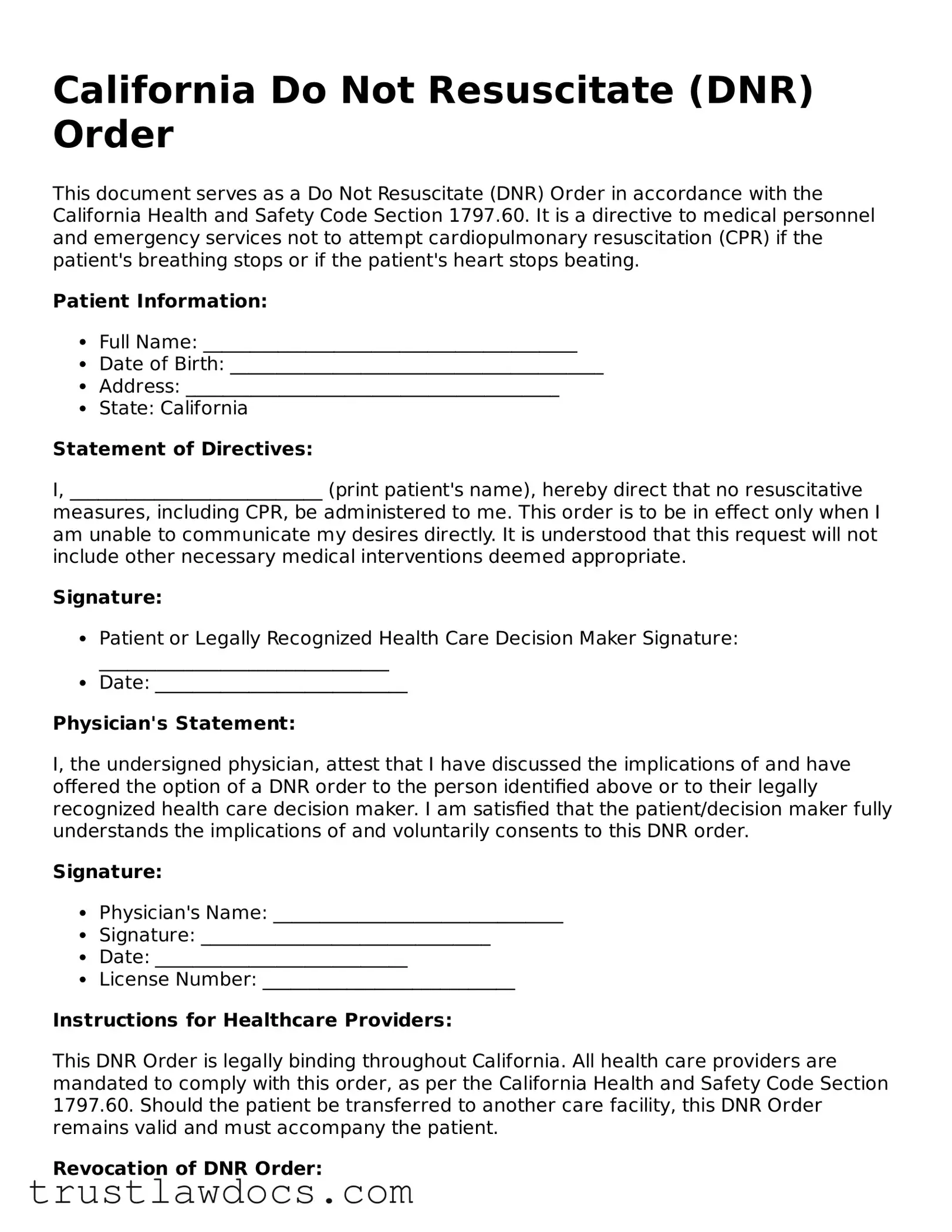What is a Do Not Resuscitate Order (DNR) in California?
A Do Not Resuscitate Order, often referred to as a DNR, is a legal form used in California that tells medical professionals not to perform cardiopulmonary resuscitation (CPR) if a patient's breathing stops or if the patient's heart stops beating. It's a decision made by a patient or their health care proxy to avoid life-sustaining treatment in the event of cardiac or respiratory arrest.
How can someone get a DNR order in California?
To obtain a DNR order in California, a patient or their legal representative must discuss their wishes with a healthcare provider. The provider will then fill out the appropriate form, which must be signed by the patient (or their representative) and the physician. This form should be kept in a place where it can be easily found by emergency personnel, such as with the patient or in their home.
Who can consent to a DNR order?
A DNR order can be consented to by the patient themselves if they are of sound mind and capable of making medical decisions. If the patient is unable to do so due to medical reasons, a legally appointed health care proxy or power of attorney can consent to a DNR order on behalf of the patient.
Is a DNR order permanent?
No, a DNR order is not permanent. A patient or their appointed health care proxy can revoke a DNR order at any time. It is advisable to discuss any changes with a healthcare provider, who can assist in updating or canceling the order.
Does a DNR order affect other treatments?
No, a DNR order solely indicates that CPR should not be performed in the event of cardiac or respiratory arrest. It does not affect any other medical treatment or care the patient may receive for other conditions or emergencies.
Can a DNR order be used in any setting?
Yes, in California, a DNR order is valid in any setting, including hospitals, at home, and in long-term care facilities. It is important to ensure that the DNR order is easily accessible to first responders and medical personnel in any of these settings.
What happens if there is no DNR order?
If a patient does not have a DNR order, medical personnel will typically proceed with all resuscitative efforts in the event of cardiac or respiratory arrest. This includes CPR and may include other life-sustaining measures unless instructed otherwise.
Do emergency responders need to see the DNR order?
Yes, emergency responders need to see the DNR order to honor it. It's crucial for the DNR order to be kept in a prominent place where emergency personnel can easily find it, such as in a wallet or a visible area in the home.
Where can someone find more information about DNR orders in California?
For more information about DNR orders in California, individuals can consult their health care provider, visit the website of the California Department of Public Health, or contact a local hospice organization. These resources can provide guidance and assistance in understanding and completing a DNR order.
